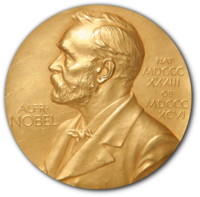
Photo from wikipedia
The chromosomal DNA of bacteria is folded into a compact body called the nucleoid, which is composed essentially of DNA (≈80%), RNA (≈10%), and a number of different proteins (≈10%).… Click to show full abstract
The chromosomal DNA of bacteria is folded into a compact body called the nucleoid, which is composed essentially of DNA (≈80%), RNA (≈10%), and a number of different proteins (≈10%). These nucleoid proteins act as regulators of gene expression and influence the organization of the nucleoid by bridging, bending, or wrapping the DNA. These so-called architectural properties of nucleoid proteins are still poorly understood. For example, the reason why certain proteins compact the DNA coil in certain environments but make instead the DNA more rigid in other environments is the matter of ongoing debates. Here, we address the question of the impact of the self-association of nucleoid proteins on their architectural properties and try to determine whether differences in self-association are sufficient to induce large changes in the organization of the DNA coil. More specifically, we developed two coarse-grained models of proteins, which interact identically with the DNA but self-associate differently by forming either clusters or filaments in the absence of the DNA. We showed through Brownian dynamics simulations that self-association of the proteins increases dramatically their ability to shape the DNA coil. Moreover, we observed that cluster-forming proteins compact significantly the DNA coil (similar to the DNA-bridging mode of H-NS proteins), whereas filament-forming proteins increase instead significantly the stiffness of the DNA chain (similar to the DNA-stiffening mode of H-NS proteins). This work consequently suggests that the knowledge of the DNA-binding properties of the proteins is in itself not sufficient to understand their architectural properties. Rather, their self-association properties must also be investigated in detail, because they might actually drive the formation of different DNA/protein complexes.
Journal Title: Biophysical journal
Year Published: 2020
Link to full text (if available)
Share on Social Media: Sign Up to like & get
recommendations!